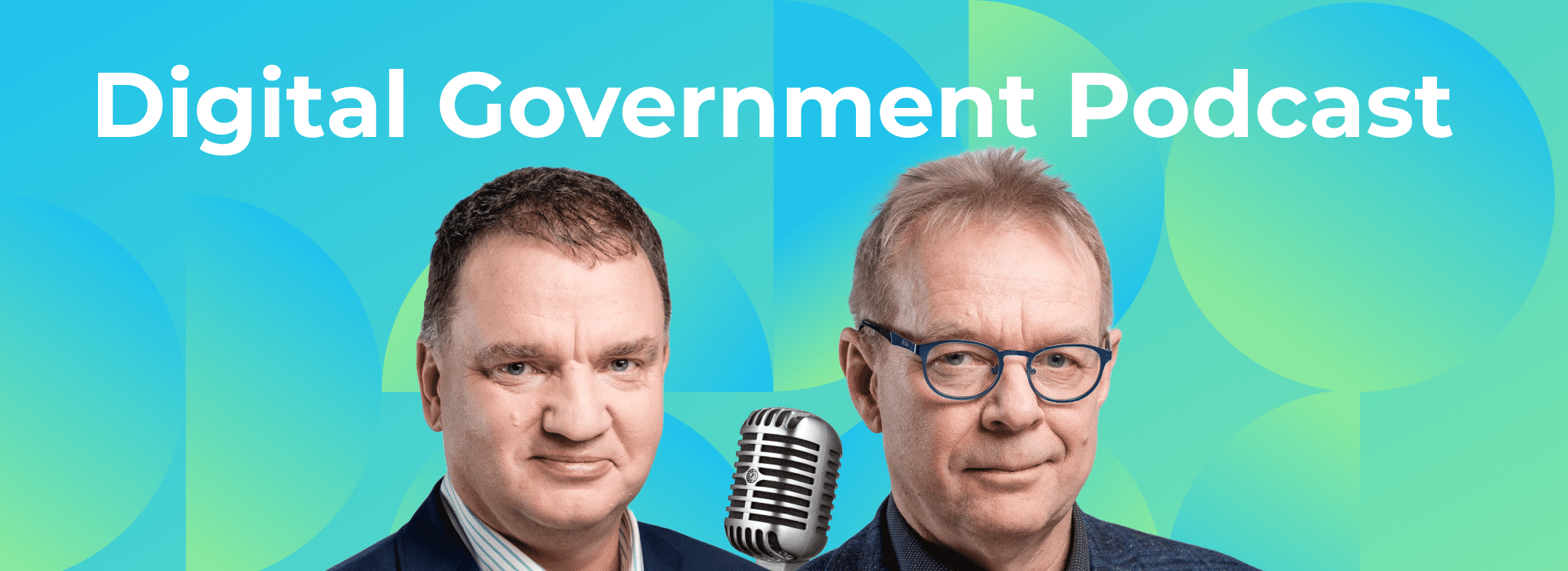
Podcast 🎧 & blog: 20 years of change in managing digital transformation
How long are two decades, when it comes to digital government? Well, very long – and with a lot of things happening. At least that is what it feels like, as the rapid pace of technological development presents governments with new opportunities, sure. But also, with challenges and risks, new elements to consider in strategy papers, and different ways of delivering services to citizens.
Arvo Ott has seen quite some things happen in this time span. First, as the first Government CIO of Estonia until the early 2000s; then, in his work for e-Governance Academy, where he is a Member of the Management Board. In conversation with Chairman Hannes Astok, we review how the task of managing digital transformation has changed throughout the years. In Estonia and beyond.
The evolution of terminology and technological landscape
Terminology is often a good point to start. Shifting terminology, indeed, mirrors the changing nature of digital government too. On that basis, Ott reflects on the era where the focus of electronic governance or e-governance was on simply integrating computers and networks within government infrastructures.
But over the years, this metamorphosed into a more comprehensive approach marked by discussions surrounding e-Estonia, the information society, and finally, digital transformation. Where did complexity lie? In driving collaboration and change across different ministries, emphasising the need for a shift from technology-centric to collaboration-centric strategies.
Ultimately (but not in the end), it all marked a progression of government’s engagement with technology. Effectively so, to the digital society, Estonia is today regarded as, in a story of social and economic development – though not linear, or without the need for changes, adaptation, and making the most out of resources available.
Political will, pragmatic implementation
Perhaps, though, one of the strongest drivers of digital transformation is not tech-related. Political will, and the influence it plays in driving digital government initiatives, certainly holds a vital role. But while this matters to shaping budgets and strategy, pragmatic needs and motivations in the public sector also set the tone for successful implementation.
For the most part, as an example, that has been the case in Estonia throughout two decades of digital transformation initiatives. Complemented by practical problem-solving approaches, a balanced environment came to be where officials and politicians collaborated effectively.
Throughout the years, this sounded like a unique experience to many outside observers. Even irreplicable, perhaps. And still, no one says that every country should do the same – or that the Estonian way, and this only, is how we bring about digital transformation.
Different models to lead and execute digital development
As Ott explains and has seen in his multi-continental experience, diverse countries adopt diverse models to realise their digital development strategies. Cultural factors, for example, are pivotal influencers in the way digital governance is thought of, and what it shall look like.
For this reason, transferring one country’s model directly to another is likely to not work. Each government, instead, should seek and adopt specific approaches to creating a digital society, or even just moving early steps towards increasing efficiency in the public sector through technology. Models that must be tailored to individual, cultural, historical, and legal contexts.
In this diversity of models, it emerges a distinction as well between coordination and management – and what they respectively entail, on the significance of agreements and cooperative frameworks in steering progress. It is a matter of focus.
According to Arvo Ott, coordination revolves around achieving agreements and fostering collaboration among different ministries, often relying on mechanisms for cooperation. In contrast, management focuses on setting rules and leading direct projects, primarily at the ministry level.
Small steps and soft sides in far-reaching transformation
Twenty years – and counting – of learning and doing digital transformation tell us that technology, while a crucial part, is not the sole determinant in transforming government processes. Diversity of cultural, legal, and social contexts informs the shape and direction that change should take. From country to country.
But even more so, Ott’s experience underscores the critical need for a balance between technology and human-centric approaches in digital government. Starting small is one of the ways to go, with manageable steps and agile goals, rather than monumental projects with monolithic approaches. All without forgetting about the soft side, in Ott’s words, of digital transformation – change management, cooperation, and attitudes toward adopting new technology. A mix of factors has proven successful in Estonia’s experience so far, and in that of more countries worldwide too.
Listen to all episodes of the Digital Government Podcast here!
New episodes will be launched on Wednesdays.
















